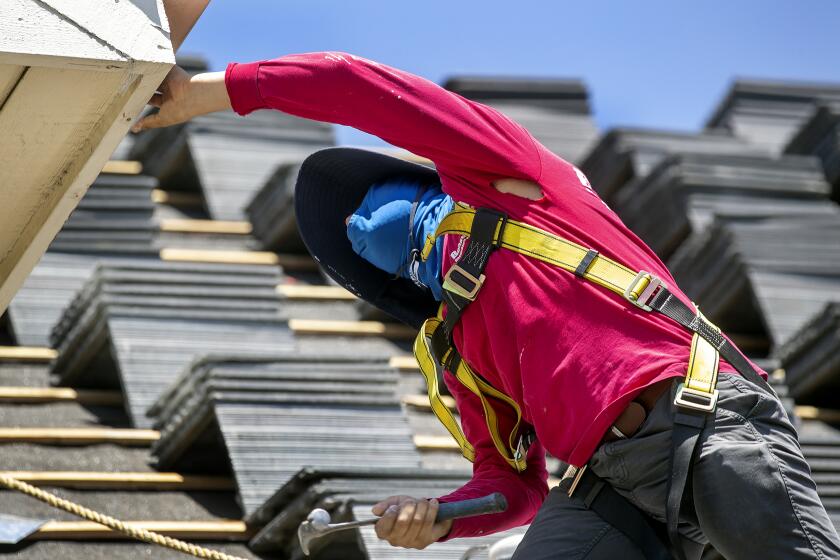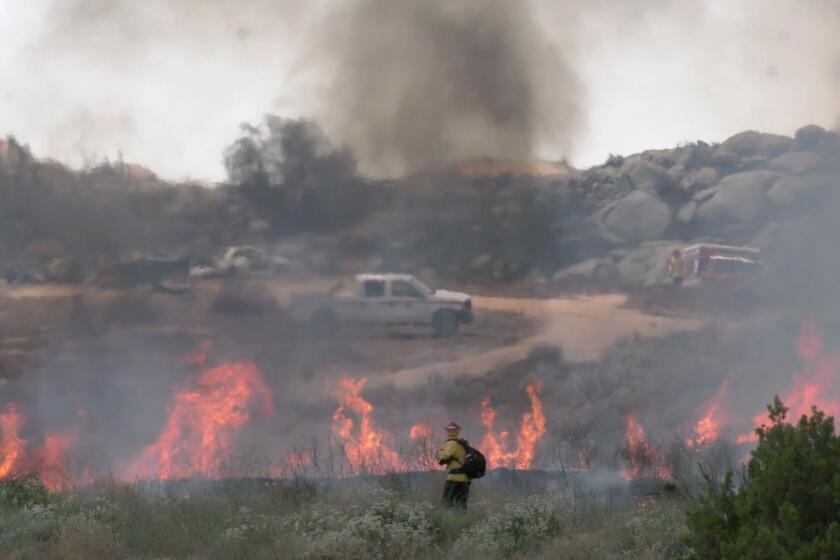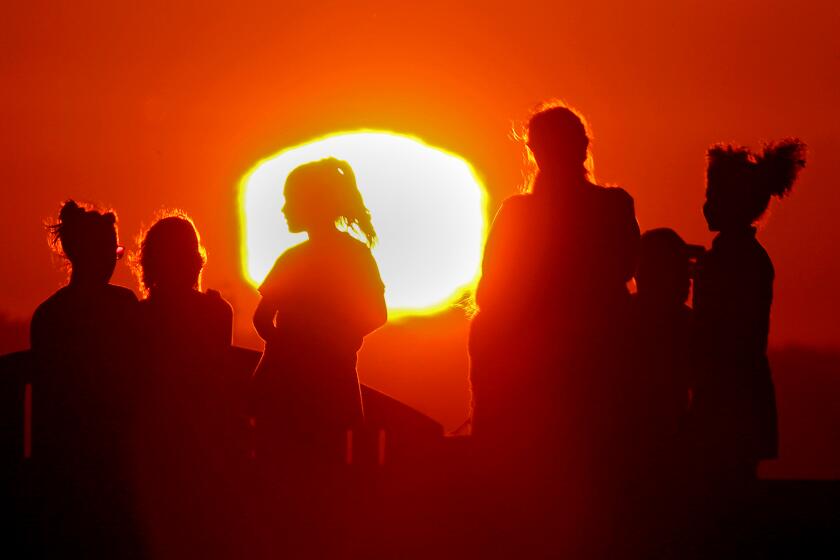‘Heat dome’ will hit Southern California with triple-digit highs, fire danger
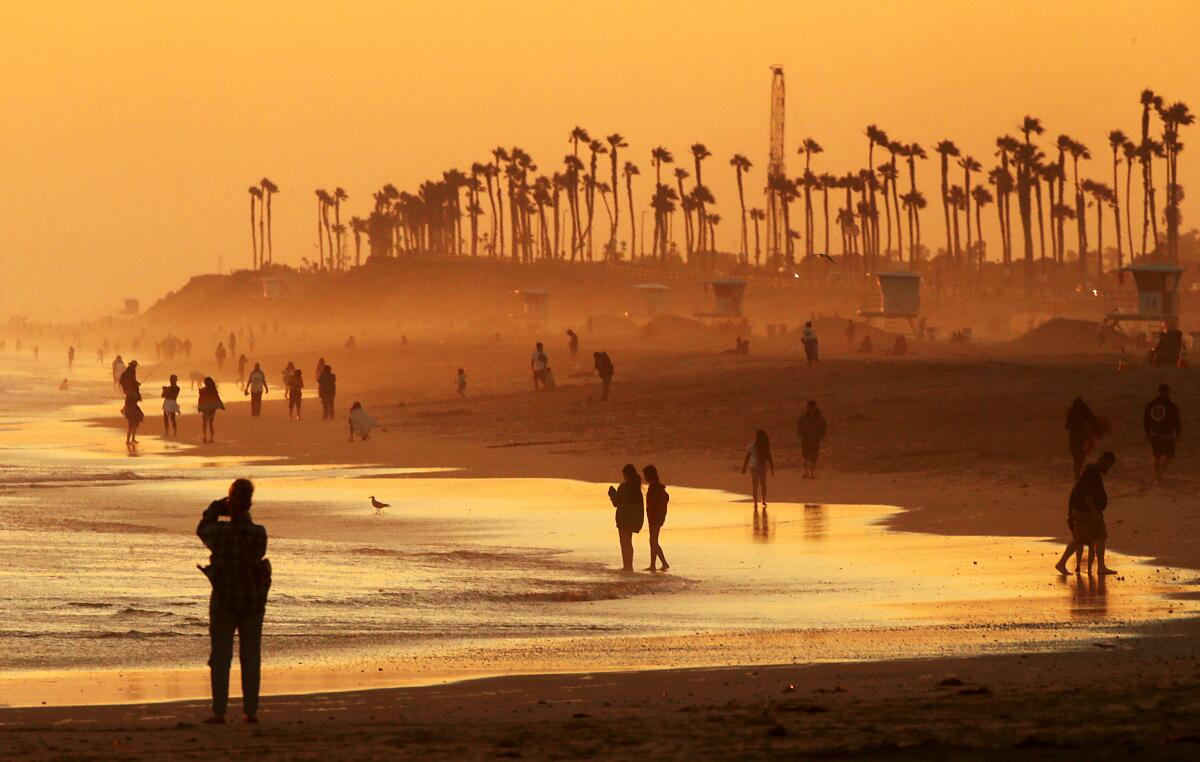
A “heat dome” settling over Southern California is expected to intensify through the weekend, bringing temperatures into the triple digits and elevating wildfire danger.
An excessive-heat warning for the Antelope Valley and foothills will be in effect from 10 a.m. Friday to 10 a.m. Monday, with temperatures from 103 to 113 degrees expected, according to the National Weather Service. Overnight lows could provide little relief, dipping only into the mid-70s to mid-80s.
Temperatures are forecast to peak Friday into Monday in the deserts, lower mountains and interior valleys. Overnight lows are expected to range from the low 70s to 80s in the lower mountains.
For the coastal valleys and Santa Monica Mountains, the heat is expected to peak Friday into Sunday, with highs in the 90s to 105.
The warmest areas will be in the valleys, the San Fernando Valley foothills and the Los Angeles County mountains. Woodland Hills could see a high of 107 degrees on Saturday.
The campaign — part of Newsom’s $404-million Extreme Heat Action plan — will partner with 121 community-based organizations to conduct outreach in every county.
Decades-old daily temperature records are in striking distance over the weekend, according to NWS meteorologist Rose Schoenfeld. Lancaster is forecast to hit 110 degrees Saturday, which would tie a record set in 1972, and 109 on Sunday, which would equal a mark last reached in 1960. Pomona could also see a daily temperature record tied Friday, when the heat is forecast to reach 103 degrees, matching the record set in 1930.
“It’s not a crazy, extreme heat wave or anything,” Schoenfeld said. “It’s a run-of-the-mill heat wave.”
The hot conditions are caused by an area of high pressure aloft over Southern California that began Wednesday, leading to a warm air mass known as a “heat dome” that traps the heat near the surface. The air mass is not expected to mix with other areas, resulting in the air being still and keeping the region warm.
The high pressure is expected to cause compression of the marine layer, keeping it concentrated mostly to coastal areas and away from more inland regions, which will be much hotter.
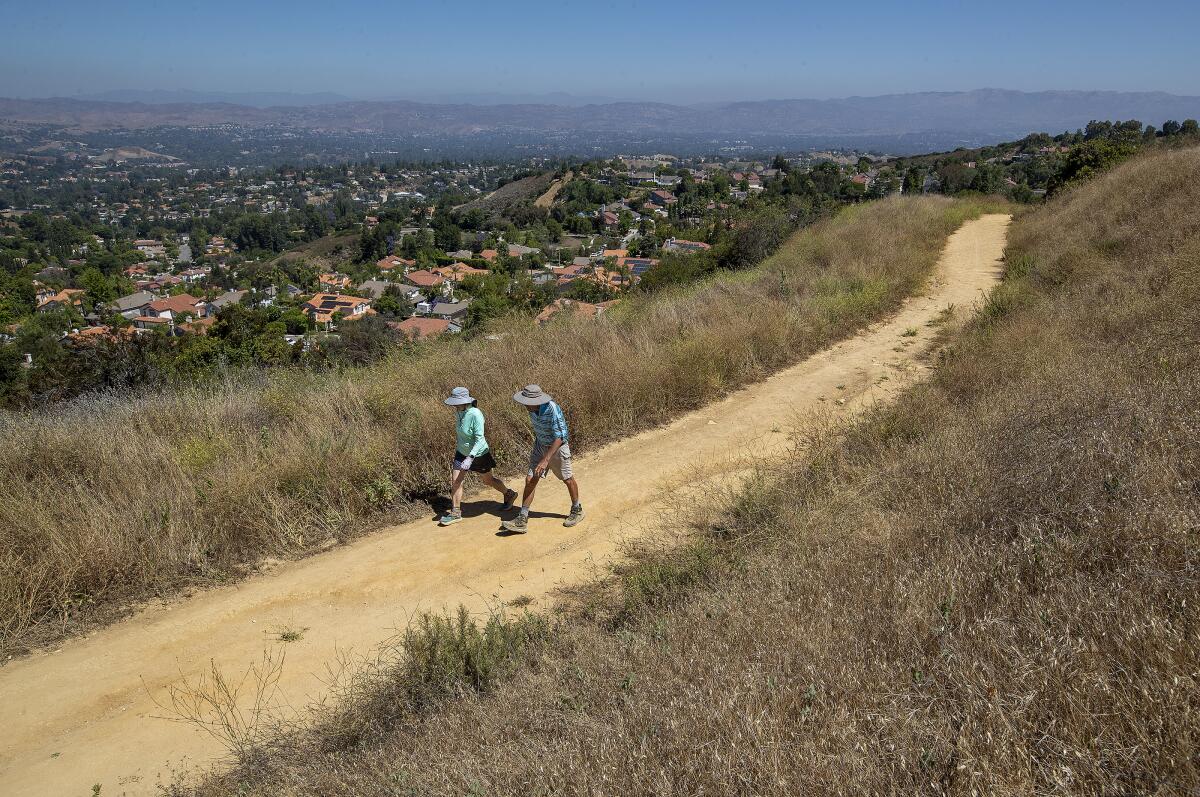
Those inland conditions will also lead to a drying trend with low humidity, creating critical fire conditions throughout the week. Winds, however, aren’t expected to be strong over the weekend.
The Interstate 5 corridor will likely see some wind, which will make it more vulnerable to fires starting. Schoenfeld recommended that people avoid using potential ignition sources and throwing flammables such as cigarettes out the car window.
Several wildfires have already ignited across the region during the heat wave. A brush fire broke out around 1 p.m. Wednesday near Castleman and Clifden lanes in Burbank, according to the Burbank Fire Department. The fire was knocked down within 45 minutes and contained to 1 acre, with no injuries or structure damage reported.
A grass fire also burned Wednesday afternoon near the 210 Freeway in Pacoima but was contained within about 30 minutes without any damage to structures or injuries, according to the Los Angeles Fire Department.
Amid dangerous heat wave conditions, several wildfires ignited across Southern California — including one that torched some outbuildings in Riverside County.
According to online reports, a fire near Marine Corps. Base Camp Pendleton in northern San Diego County had reached more than 100 acres by Wednesday afternoon.
The Rider fire was first reported Tuesday afternoon on Seaton Avenue in Mead Valley, according to the California Department of Forestry and Fire Protection/Riverside County Fire Department. The fire was fully contained at 12 acres by 7:14 p.m. Tuesday.
The Springs fire was first reported Tuesday at 4:46 p.m. in Moreno Valley. The blaze was fully contained at nearly 37 acres the same day at 11 p.m.
The Snake fire, which started Tuesday afternoon in Lake Elsinore, was at 30 acres and 75% contained by Wednesday afternoon. One firefighter battling the blaze was taken to a hospital with an injury that was not life threatening, officials said.
Todd Hall, a meteorologist at the National Wather Service office in Oxnard, said it’s typical for vegetation to dry out after the rainy season. As moisture levels go down, vegetation becomes fuel for fires — with critical levels usually reached around July and continuing through November.
“The mountains that were green in March, April, are now turning brown,” he said. “And so those are those grasses that we’re starting to see that have cured. They’re ready to be kind of basically fuel for fire.”
Cal Fire Capt. Chris Bruno said firefighters are constantly preparing for these changes in temperature throughout the year.
Bruno added that it is important for people to prepare for the heat by staying hydrated and having adequate supplies when they go outside. Should any fires erupt, he said, nearby residents should stay informed about road closures and evacuation warnings or orders.
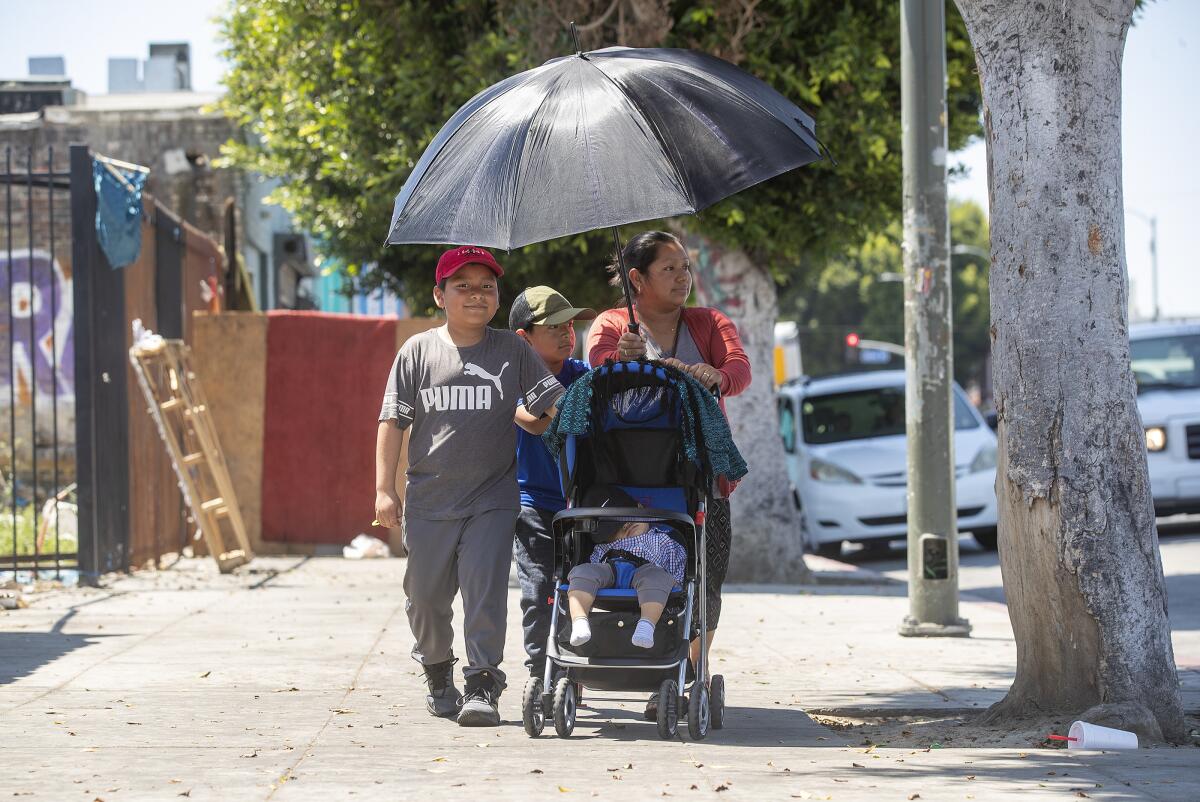
Asked about potential outages in the coming days, Gov. Gavin Newsom said California’s power grid “should be all right.”
“We expect to be in good position this week, but [we’re] mindful that not everybody will be, in the context of keeping themselves safe,” Newsom said.
The governor promoted the state’s $20-million campaign to warn vulnerable residents about the dangers of extreme heat through community outreach, canvassing and phone banking.
“This is becoming all too familiar in the state of California, and that’s why we are stepping up our efforts as it relates to a real targeted focus on keeping people safe and educating people on the importance of staying hydrated and staying cool,” Newsom said.
Officials from several state agencies have partnered with the Governor’s Office of Emergency Services on an Extreme Temperature Response Plan.
California’s first heat wave of the year could last into next week. Here are some tips on how to stay safe and cool during hot weather.
Jeff Killip, chief of the Division of Occupational Safety and Health, said during a Wednesday news briefing that officials were trying to survey the landscape and reach out to outdoor workers susceptible to heat-related illness.
“There’s a lot of people, and we’re doing the best we can to get a handle on the most vulnerable workers and the most at-risk workplace hazards, and address those as proactively as we can,” he said. “It’s definitely on our radar.”
During the heat wave, Southern Californians are advised to stay hydrated, avoid the outdoors if possible, find air conditioning indoors or visit a cooling center.
Children, elderly people, pets, unhoused residents, pregnant people and people with chronic health conditions are more vulnerable to heat-related illness. Symptoms of heat exhaustion include heavy sweating; cold, pale and clammy skin; a fast pulse; nausea or vomiting; dizziness; headache; and passing out. Worsening symptoms could be signs of more serious heatstroke.
Times staff writers Taryn Luna, Saumya Gupta and Jeremy Childs contributed to this report.
More to Read
Sign up for Essential California
The most important California stories and recommendations in your inbox every morning.
You may occasionally receive promotional content from the Los Angeles Times.
